1906 Mizo Outpouring
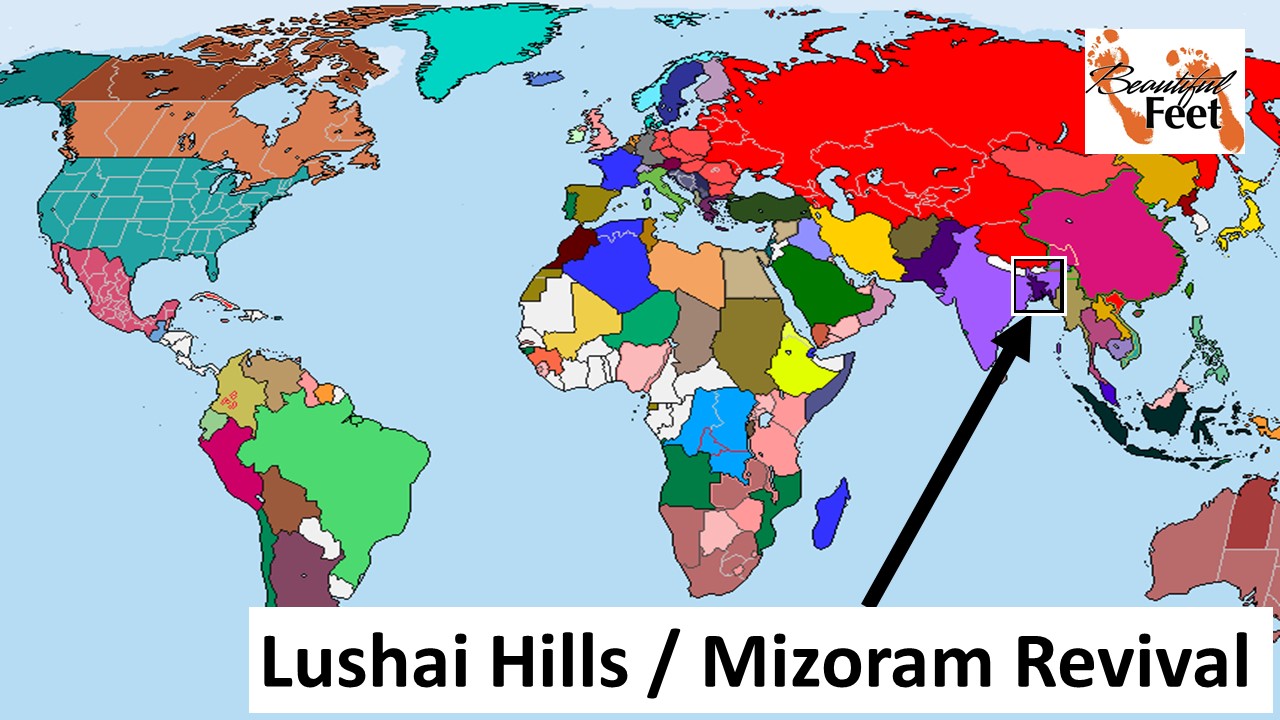
The revival took place in the northeast corner of India.
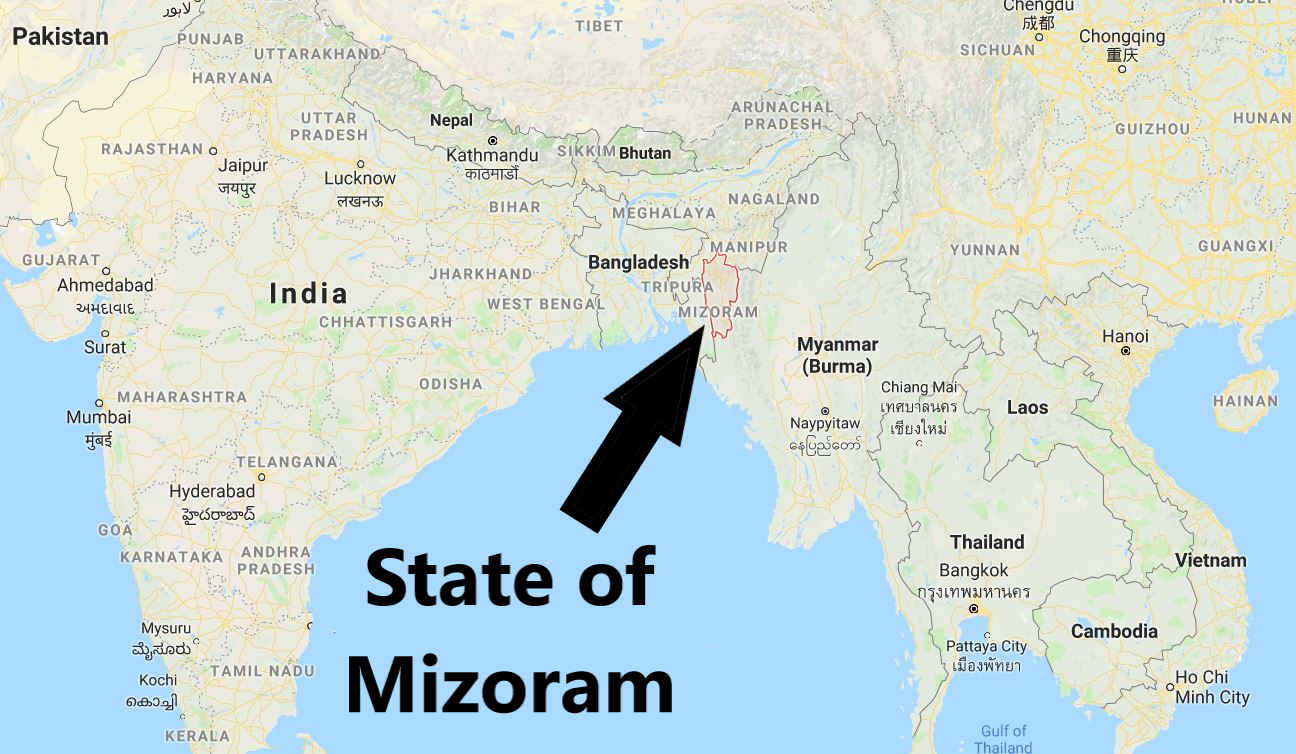
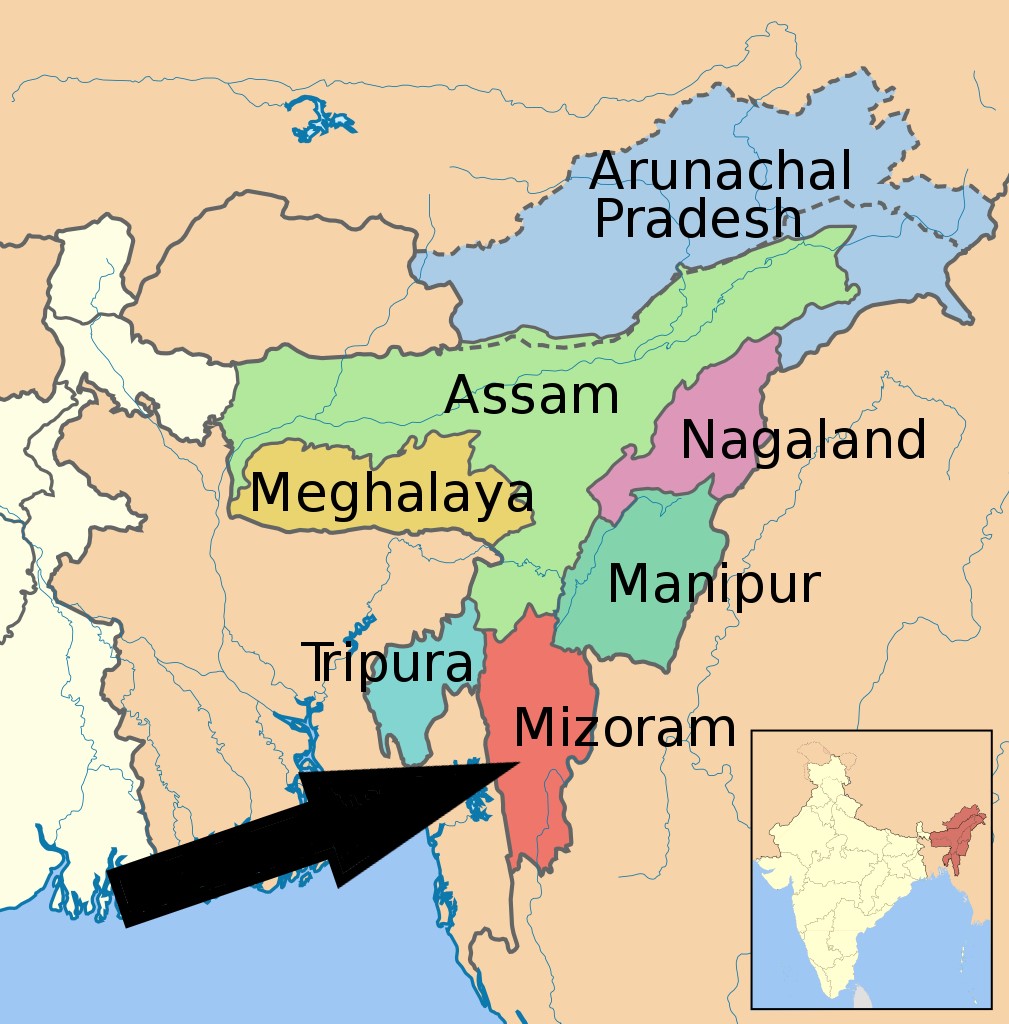
This revival was sparked by the Khasi Hills Revival that was taking place in the state of Meghalaya (also pictured), and it spread to the surrounding states.
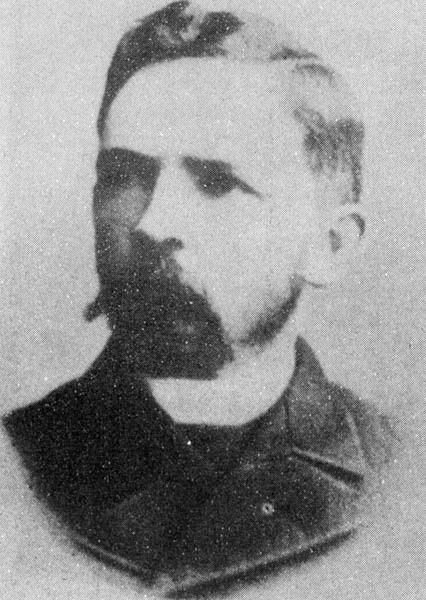
Welsh Presbyterian Missionary
William Williams – the first
missionary in Mizoram
Names Given to this Revival
►Lushai Hills Revival
►Mizo Outpouring
►Mizoram Revival
Introduction
The area where this revival took place was known as the Lushai Hills, a mountain range located in the Indian state of Mizoram.
Most revivals are sparked by news of revivals having taken place in other locations. That is what happened with this one. News of the 1905-1906 Khasi Hills Revival in the Indian state of Meghalaya ignited a passion for the same in the hearts of the Mizo believers living in the Lushai Hills.
Conditions Prior to the Revival
The Mizo People, also known as the Lushai, were the inhabitants of the Indian state now known as Mizoram. They had been headhunters for generations and had practiced human sacrifices. Their culture was saturated with animistic occult practices.
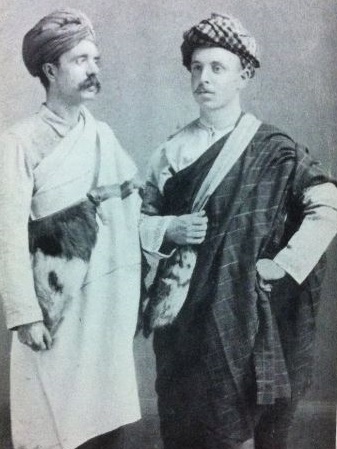
In Mizo attire, missionaries
F. W. Savidge and J. H. Lorrain
Extraordinary Prayer
When the news of the 1904-1905 Welsh Revival came to India it ignited prayer for revival to take place there as well. This ultimately led to 100 locations throughout India experiencing revival over the next few years. Three notable examples of revivals in India were the 1905 Mukti Revival, the 1905 Revival at Dohnavur, and the 1905-1906 Khasi Hills Revival.
The Welsh missionaries in the state of Meghalaya had been praying for revival beginning in early 1903, and that state experienced their revival beginning in early 1905.
The news of the 1904-1905 Welsh Revival, as well as news of revivals popping up throughout India, created a hunger for the few Christians in the Lushai Hills.
Beginning in July 1905, Christians in the Mizoram towns of Aizawal and Serkawan began praying for revival.
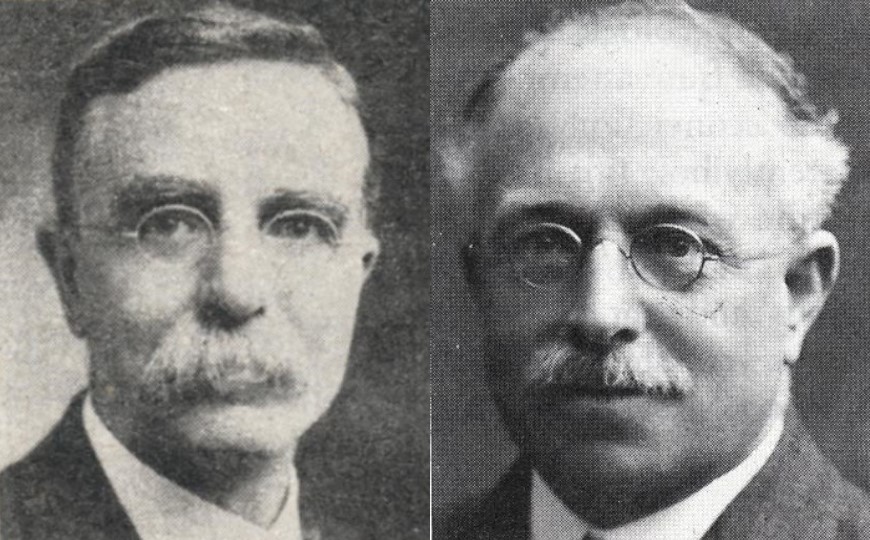
English Baptist Missionary Frederick W. Savidge and Scottish Baptist Missionary James H Lorrain. These two men created the written language for the Mizo people. Together with David E. Jones, these men planted churches and started schools.
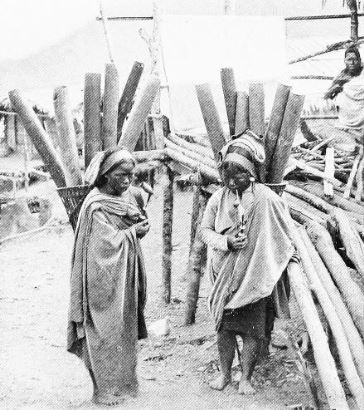
Lushai women carrying water
in giant bamboo canes
What Happened
When the news of the northern Khasi Hills Revival came to the Mizos (Lushai Hills Tribes), they decided to send representatives to attend the March 16-19, 1906, Presbyterian Annual General Assembly that was to be held in the Khasi Hills town of Mairang.
A team of ten were sent, seven of whom were Presbyterians and three Baptists. This team walked the entire distance through mountain jungle, taking two weeks.
The Ten Member Team
The Women: Siniboni, Pawngi, Thankhumi, and Khuma. Siniboni was a Khasi Christian with years of Bible experience. She knew the way to Mairang, and she knew the language.
The Men: Thanga (who knew some of the Khasi language), Chawanga, Vangchhunga, Thankunga, Parima, and Zathanga (the last three being from south Mizoram.
The team first arrived in Shella, then made their way to Cherrapunjee. That night as they were singing hymns at a prayer meeting, the team witnessed people’s hands trembling. Children’s hands were trembling too. The next day they left Cherrapunjee for the two day walk to Mairang where the Assembly was to be held. They stopped at a home where there was singing and they saw a man trembling and “shaking like a leaf.” They had never witnessed such a manifestation of God’s power like that before.
During the Annual General Assembly the presence of God was so overwhelming for the team from the Lushai Hills, that Khuma, one of the team members, was weeping. Another one, Vangchhunga, was so powerfully overcome by the presence of God that he clenched his fists and became rigid and could hardly breathe (Daniel 10:17). Afterwards he said,
I felt my inside to be more blazing hot than fiery embers. It was almost beyond endurance.
On Sunday afternoon, in the open air, one of the missionaries, John Evans, called out to the Mizo team and said:
Mizo friends, come and stand in front of this table and we shall offer prayer for you … Now, … let us join together in prayer on behalf of these Mizos and their land.
With that, the 8,000-10,000 that had gathered began praying for them. One of the team members, Thanga, wrote later about that incident with these words:
At once all the people present were united in a mighty chorus of prayer. We stood there weeping and trembling. Not one of us remained unaffected.
On Monday morning, March 19, 1906, the team began their journey back to Lushai Hills. Strangely, their exultation had left them and it was replaced with a depression. On their journey back they visited the town of Shillong, and after spending the evening there, they got up to leave the next day and the Khasi believers laid hands on them to pray before they set off on their journey, and as they did, one Khasi believer prophesied:
One of you is still not completely clean. You are now homeward bound and the Holy Spirit is going with you, but so is Satan! Be careful and keep guard on yourselves, otherwise you will have a great deal of trouble on your way.
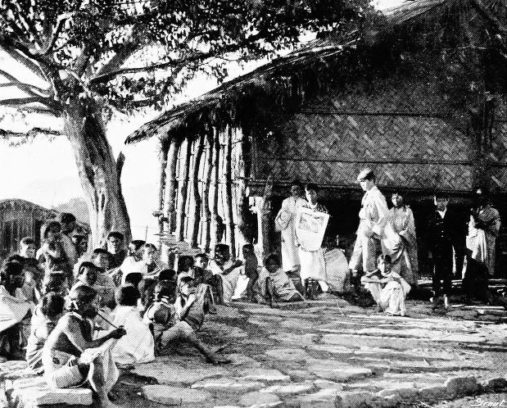
Preaching to a Group
of Young Mizo Men
During their journey a sudden and bitter disagreement arose between them and they would not speak with one another. They stayed silent till they reached the Mizo village of Kukipunji. They preached to the people in that village, but it had no effect.
When the team arrived at the next village, eleven miles from the Mizo town of Aizawal, the one they originally set out from several weeks before, reconciliation began taking place. They began to question themselves to find the cause of their bad attitudes toward each other, and nobody could determine what had caused it (demonic oppression). They were suddenly filled with joy.
Outside of the town of Aizawal, in the section of the town called Chaltang, they stopped to pray, and after each one of them had prayed, their hearts will filled with a strange joy. Zathanga, one of the team members then said:
While the first of us was praying I was aware of a streak of flame, very high above us. And, as each one prayed in turn, the flame descended lower and lower and, as the last one prayed, it disappeared. I am sure it went inside us.
Initial Disappointment Upon their Arrival in Aizawal
After the team was back in Aizawal they were welcomed by the believers. Every night they had a prayer meeting, but there was no sign of revival. The team member, Thanga, was highly discouraged, and said;
Those who had not been there (at the Mairang General Assembly) were very suspicious and thought we were merely imitating what the Khasi people were doing. They sneered at us.
On Sunday, April 8, 1906, three of the team members decided they needed to depart the following morning and continue their 3-4 day journey south to their homes in Serkawan.
The next morning, Monday, April 9, 1906, they held a farewell meeting, and at the close they sang “God Be with You Till We Meet Again.” It was then that the Holy Spirit was poured out upon them. The meeting went on for hours.
Hlunziki, a woman in the congregation, stood and made a confession of her sins, which affected them all deeply. Thanga wrote about that confession’s effect:
She stood up and confessed her sins and asked for our prayers on her behalf. We felt certain that she had been inspired and that the Holy Spirit had descended on us.
Others then began confessing their sins, with children from the school and other young people participating. Similar meetings like this went on for several weeks, sometimes continuing till midnight, with believers being confirmed in their faith and many others converted.
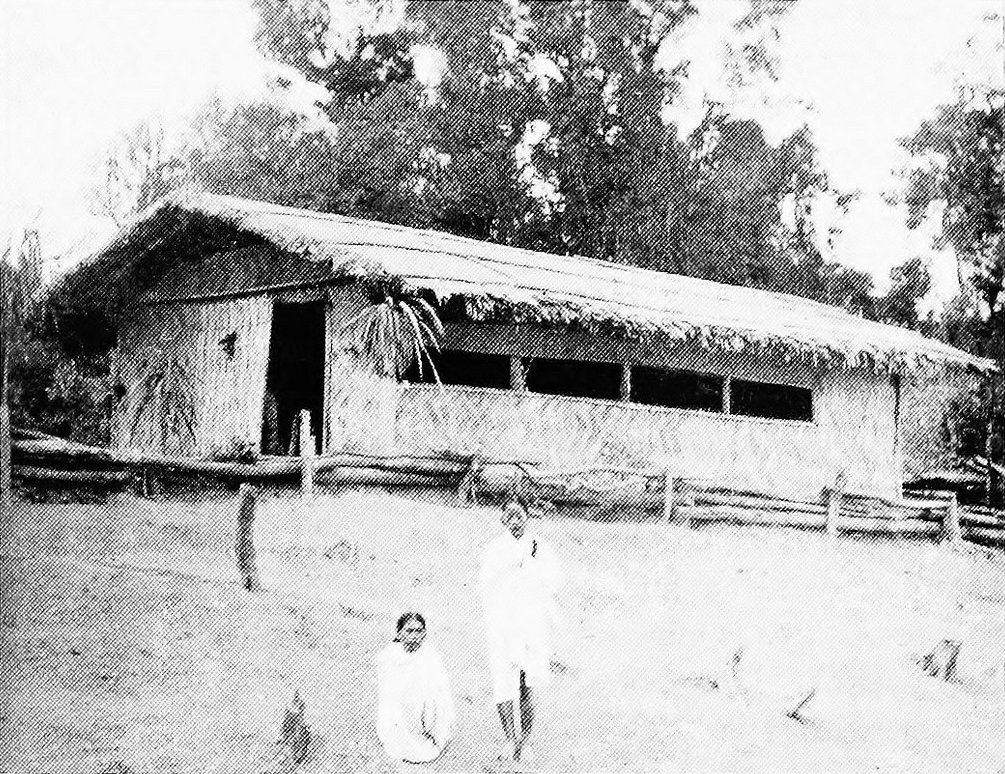
Christian Village Chapel near Lunglei. Pictured is the evangelist Thankunga – one of the male members of the team that traveled to Mairang for the Annual General Assembly.
That was the first the Lushai Hills people had experienced revival, and it spread rapidly.
The missionary David E. Jones prophesied at one of the prayer meetings in Aizawi that a revival would break out in the large village of Phullen, which was located several days journey away. This was Jones’ account of what happened during the prayer meeting when the prophecy was given:
A pleasant young teacher from Vanbawng [Phullen]… rose to speak. He was obviously under considerable stress as he strove to express his experience of the influence of the Holy Spirit on him. He kept on stammering. Under a sudden urge I told the congregation that the revival would also break out at Vanbawng. I’m not sure what I meant by that. If I had any idea at all it was that revival would come about through Hranga, for he was going home [to Phullen] in the morning. His journey would take four days. But before he reached home the message came that revival had broken out in his village. It was the finest young men in Vanbawng that had been affected by it.
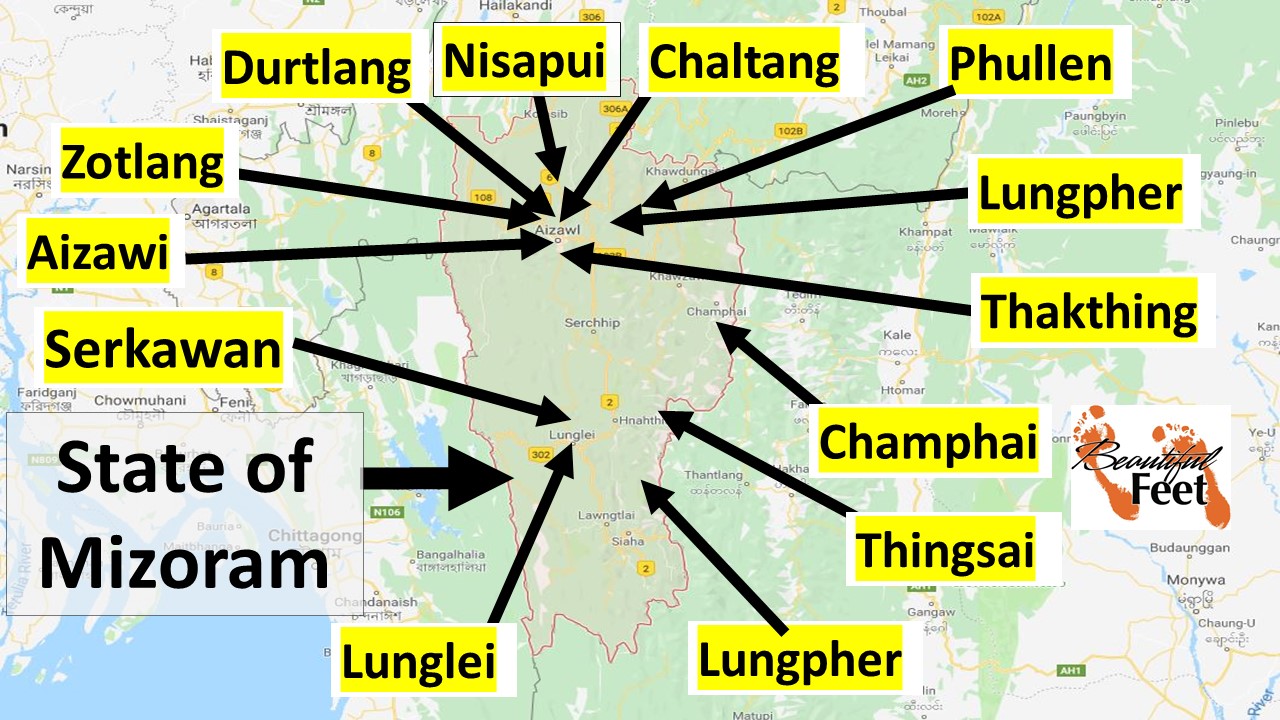
A few of the locations that were impacted by the revival.
Manifestations
As with almost every genuine revival, these Baptists and Presbyterians experienced
►Overwhelming conviction of sin, with the irresistible requirement to confess
►Trances
►Visions
►Dreams
►Trembling / Shaking
►Sobbing / Weeping / Wailing
►Prophecies
►Flames of fire seen coming down upon and entering into individuals
►White light radiating out from the church, around the Christians, and flashing light or flames around the heads of Christians
►Laughter
►Dancing
►Physical bodies becoming rigid
►Prostrations / Fainting
This is what the Welsh Baptist missionary David. E. Jones said about the trances:
Some sank so deep into a coma that it was impossible to detect either their pulse or their breathing. They seemed as though dead and at first we were greatly perturbed by this. It seemed as if they had crossed into the spirit world. But we were assured similar events took place in the Khasi Hills, and that there was no danger nor any need to worry. When they regained consciousness they confidently related the visions they had seen during their trance. There were prophecies of things which had been told while they were in that condition and which were later fulfilled.
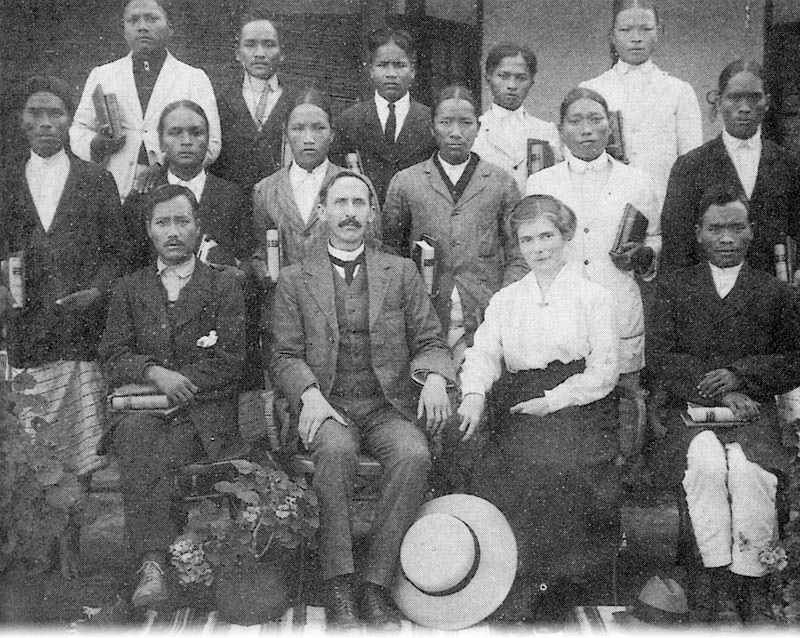
Welsh Baptist Missionary David E. Jones, and his wife, center. Surrounded by Mizo evangelists and pastors.
Persecution
In September and October of 1906, intense persecution broke out against the Christians. As the churches in and around Phullen were growing rapidly, the chiefs and leading figures drove the Christians out of their villages and into the jungles and did all they could to make life miserable for them.
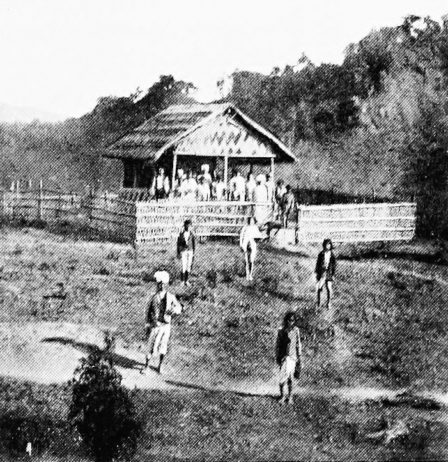
The First Lushai Hills Chapel
Demonic Counterfeit Revival
►Beginning in 1907, a counterfeit revival began among the animists. Some referred to this as a “revival of paganism” or an “anti-revival.” It was a passionate return to their ancient religious beliefs. This “anti-revival” mimicked the Christian revival where songs were sung with abandon, accompanied by dancing, while being in states of ecstasy. There were also demonstrations in every village to promote this “revival.”
►The Church suffered a serious set-back during this time and many pastors and leaders were highly discouraged.
►The “anti-revival” spread rapidly throughout the Lushai Hills till 1911-1912. It was then that a severe famine occurred, due to a horde of rats appearing, eating everything in the fields as well as the rice and grain that was in storage. Multitudes died of starvation.
►The Welsh Church took up offerings to assist with the famine relief, which was then distributed through the churches of the Lushai Hills. The Christians gave their food freely to their non-Christian neighbors who had been persecuting them.
►The love and compassion displayed brought an end to the “anti-revival.”
The Christian Revival Reappeared
►In 1913 the Presbyterians began experiencing revivals following the ordination of the first Mizo pastor.
►In 1919, an even greater revival broke out simultaneously in the neighboring Indian states of Tripura and Manipur, with 4,000 being converted.
The Results of the Mizo Outpouring
The prominent effect of this revival was not the large ingathering of souls. It was the severe conviction of sin among the Christians—and it brought them to genuine repentance.
►Because of the revivals in East India, the animistic (pagan) religions came to an end.
►Even though the Mizos are poor, they have sent out hundreds of their own missionaries to other provinces of India, as well as to neighboring nations and throughout Asia.
►Today, Mizoram (Lushai Hills area) is the most Christian state in India, with 98% of the Mizos confessing to be Christians.
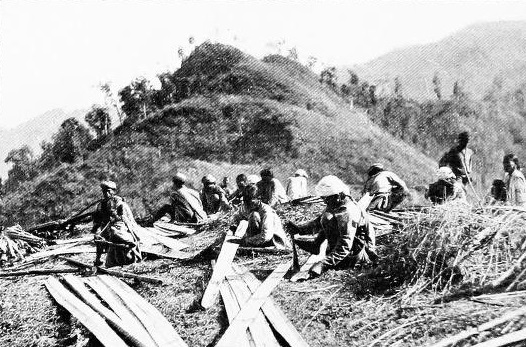
Splitting Bamboo to Build Churches
Sources
►Chronology of Mizo History by Lalzarzoa Zara Ralte
►Colonialism and Christian Missions in North East India by David Reid Syiemlieh
►History of Christianity in Mizoram by Wikipedia
►History of Mizoram by Wikipedia
►Mizo History by Mizo Story (blog deleted 31/12/2017)
►Mizo Story by archive.today
►Photography in the Lushai Hills (1870-1920) by Kyle Jackson
►Reformation and Revival by Robert H. Lescelius
►The Lushai Hills: a Story of the Lusahi Pioneer Mission by Grace R. Lewis
►The Ten Greatest Revivals Ever by Elmer Towns
Return to List of Revival Stories
Chet & Phyllis Swearingen:
Office: (260) 920-8248
romans1015@outlook.com
Beautiful Feet
P.O. Box 915
Auburn, IN 46706

